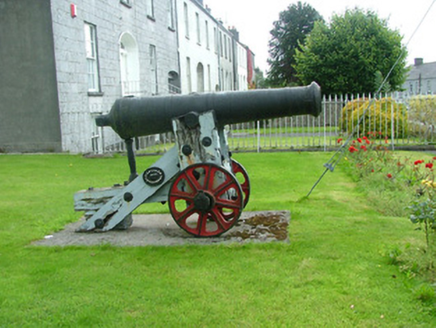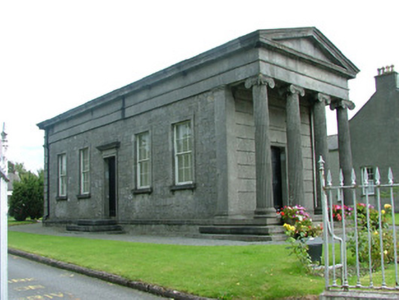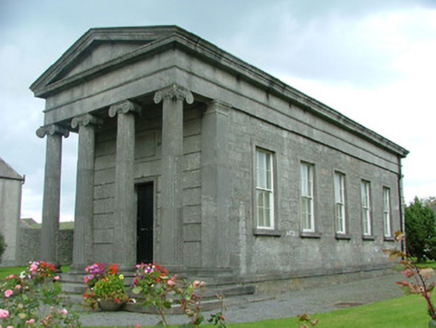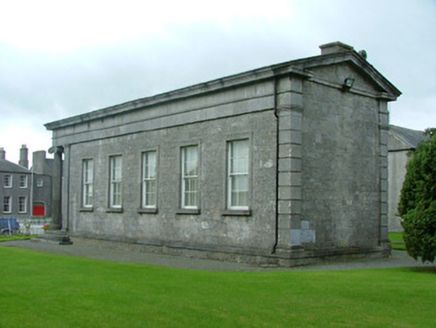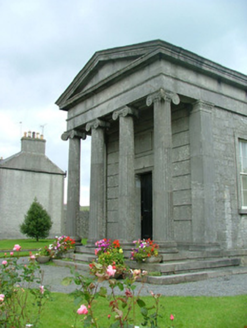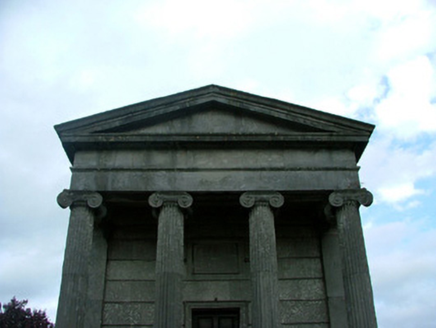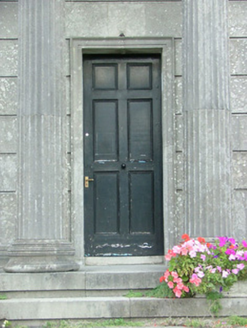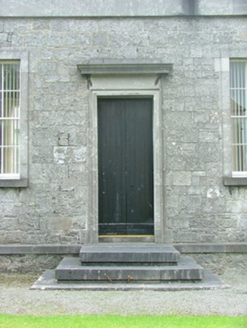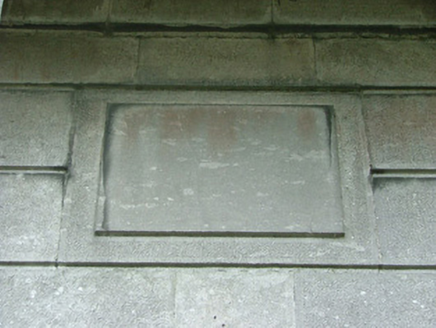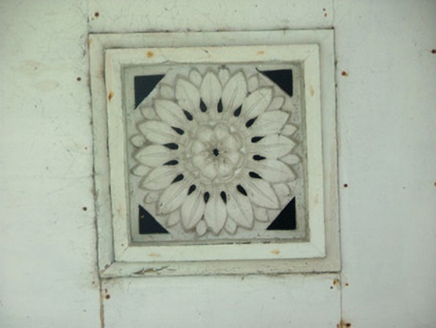Survey Data
Reg No
14819209
Rating
Regional
Categories of Special Interest
Architectural, Artistic, Historical
Original Use
School
Historical Use
Town/county hall
In Use As
Store/warehouse
Date
1820 - 1840
Coordinates
206202, 205014
Date Recorded
03/09/2004
Date Updated
--/--/--
Description
Detached single-storey temple-fronted Neo-classical commemorative hall, begun in 1828, with portico to entrance and five-bay side elevation. Set within its own grounds. Pitched tiled roof with rendered chimneystacks and cast-iron rainwater goods. Channelled ashlar to façade with random coursed squared limestone side and rear elevations. Blank plaque above entrance door. Plain architrave and frieze to front and side elevations. Pediments to front and rear elevations. Ionic portico to front elevation with fluted Ionic columns, accessed by three limestone steps. Decorative vent panels to soffit of portico. Timber sash windows with tooled limestone surrounds, keystones and stone sills. Square-headed door opening to portico with limestone architrave and replacement timber panelled door. Square-headed door opening to west elevation with limestone architrave and cornice. Detached five-bay single-storey house to rear, built c.1820, with outbuildings, now used as offices. Pitched slate roof and pebbledashed walls. Site bounded by limestone plinth wall with wrought- and cast-iron railings.
Appraisal
John's Hall, reminiscent of an Ionic temple, stands on John's Place to which it gave its name. The fine, beautifully designed edifice has an interesting history, fitting for such a spectacular building. It was designed, c.1828, by Bernard Mullins and who asscribed the inspiration to be the Temple of Ilissus. Mullins was also responsible for Saint Brendan's Catholic Church and Tullanisk. John's Hall was completed in 1833 by the Second Earl of Rosse, to commemorate the death of his twenty-six year old year old son, John Clere Parsons, who died of scarlet fever. It was first used as a school house and later it once housed Birr's Heritage Centre. With its striking Ionic portico, the building exhibits many architectural features which mark it out as one of the finest structures within Birr. Adjacent to John's Hall is a cannon known as the Crimean Gun. Captured from the Russians at the siege of Sevastopol in 1855 during the Crimean War, it was presented to the people of Birr in 1858. Its architectural setting is further emphasised by the row of houses standing directly behind on John's Place.
